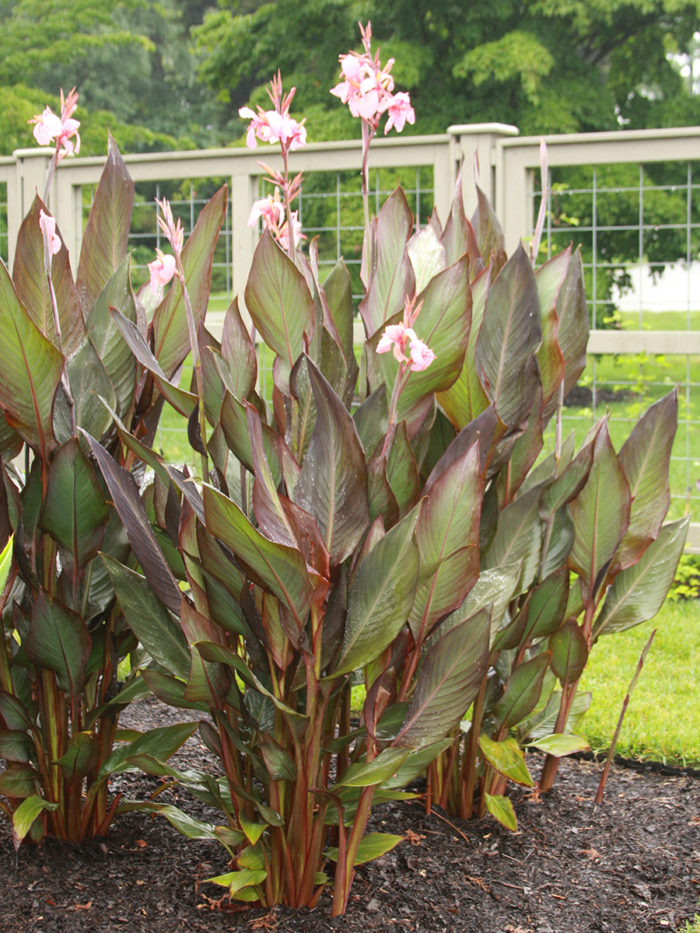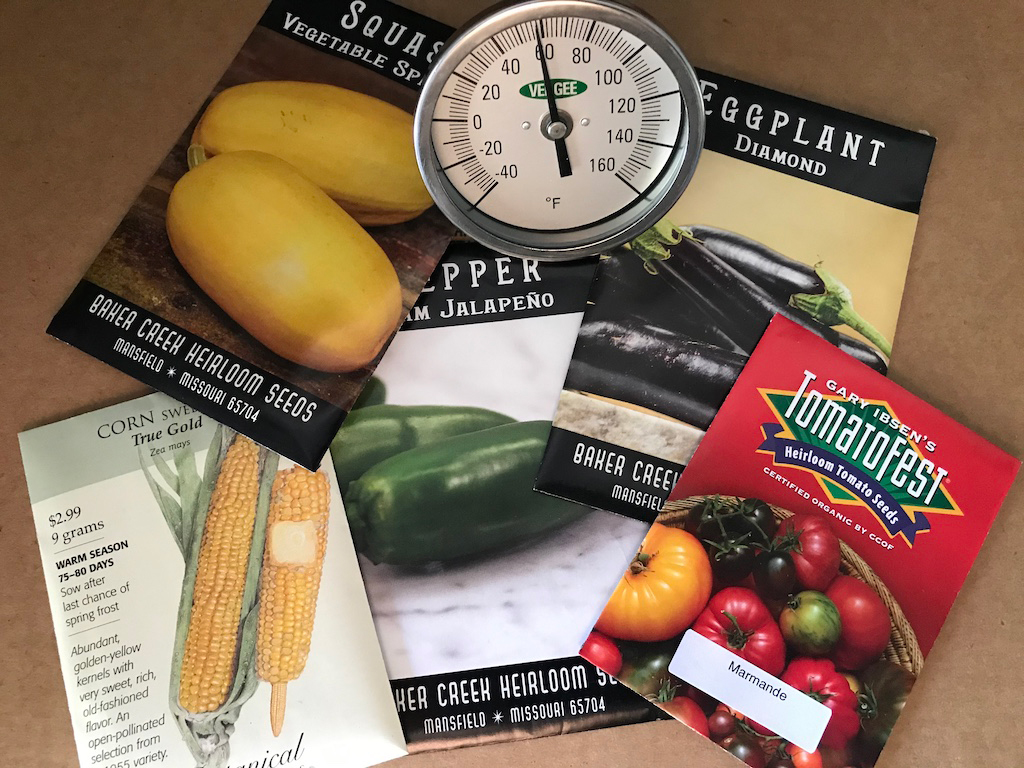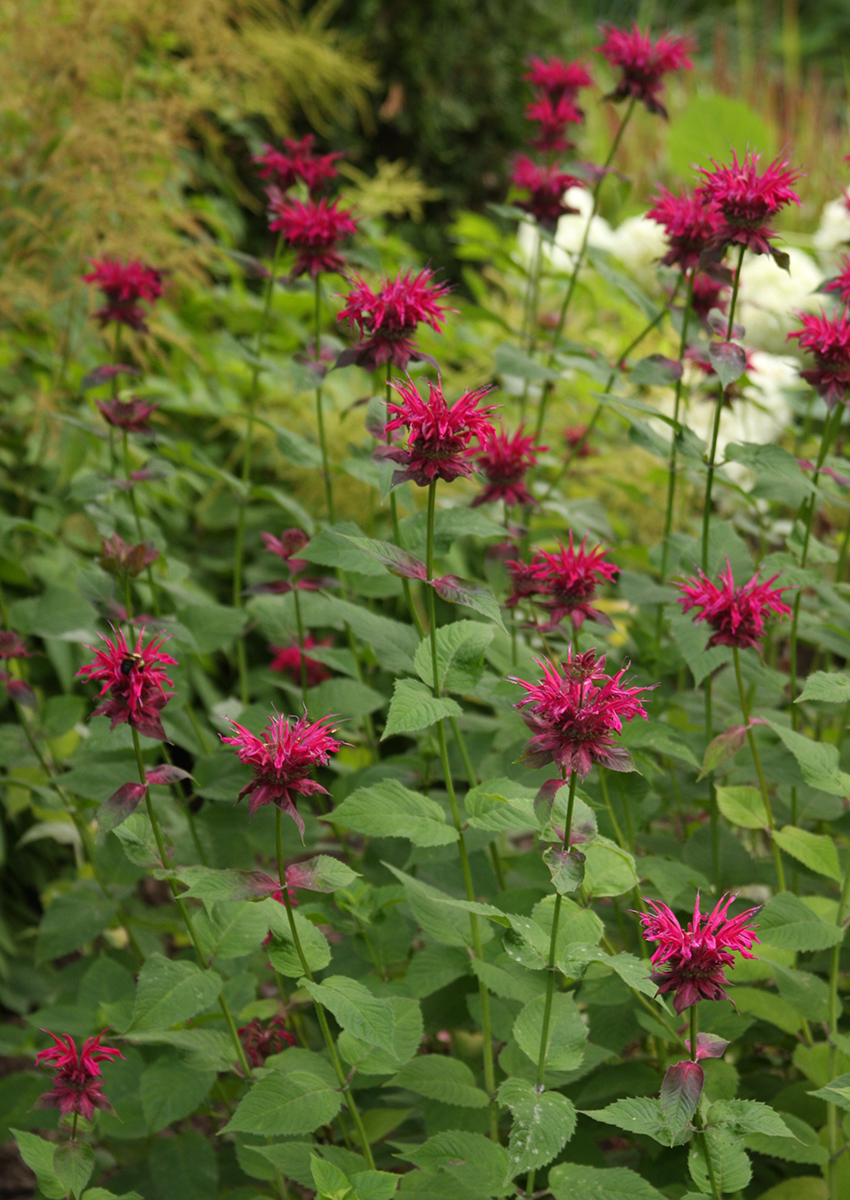
Plant, plant, plant! Add summer annuals to beds and containers, and cut back or replace spring annuals that look tired. Finish dividing and replanting summer- and fall-blooming perennials. If you haven’t already (especially those of you in the cooler parts of the region), install summer bulbs, corms, tubers, and rhizomes such as gladiolus (Gladiolus spp. and cvs., Zones 8–10), canna (Canna spp. and cvs., Zones 7–11), and begonia (Begonia spp. and cvs., Zones 6–12). Continue planting containerized trees and shrubs. Check houseplants you moved outside more closely and more often, as their new environment calls for more frequent watering, pest monitoring, and protection from too much sun. (Most successful houseplants are shade lovers by nature.)

Fertilize annuals and tropicals. This is especially important for plants in containers, as they often require frequent watering, which can leach out nutrients. Generally, nitrogen encourages lush, colorful foliage; phosphorus boosts flower, fruit, and seed production and root formation; and potassium contributes to strong growth and overall plant health. Consider a combination of fertilization regimens that includes both slow-release fertilizers, which are usually dry formulations that can be made of natural and organic compounds that break down over time, and liquid fertilizers, which are absorbed more quickly through both roots and leaves. If you incorporate both methods, reduce amounts and concentrations to avoid overfertilization.

Plant warm-season veggies. Enjoy earlier-maturing, spring produce such as broccoli and peas, and remove spinach and lettuce before they bolt. Transition from cool-season crops to heat-loving types like tomatoes and peppers. Sow seeds or install transplants of other vegetables and fruits that require warmth (squash, melons, corn, etc.) once soil temperatures surpass 65°F. Regular harvesting and succession planting will result in higher yields and varieties that don’t all mature at once. Engage in maintenance such as thinning, weeding, and pest and disease management. A little vigilance goes a long way. To avoid using excess water, use soaker hoses or drip irrigation, and water less frequently but more deeply.

Cut back later-blooming perennials. Finish pinching later-blooming perennials by the end of the month, and they will still have enough time for flower-bud formation. This is a good way to control ultimate size, have less flopping, and increase bloom, but it also delays flowering slightly. Good candidates include these:
- Asters (Symphyotrichum spp. and cvs., Zones 3–8)
- Phlox (Phlox spp. and cvs., Zones 3–8)
- Mums (Chrysanthemum spp. and cvs., Zones 5–9)
- Upright sedums (Hylotelephium spp. and cvs., Zones 3–7)
- Catmint (Nepeta spp. and cvs., Zones 3–8)
- Bee balm (Monarda spp. and cvs., Zones 4–9)
If plants have bladelike foliage, they should not be pinched; think irises (Iris spp. and cvs., Zones 3–9), lilies (Lilium spp. and cvs., Zones 3–9), and grasses. Learn more about this technique here. If staking is required, install it early to lessen harm to roots during installation, and make adjustments as required through the season.

Mow properly for a healthy lawn. Using a mulching mower on lawns has several benefits. Leaving the clippings on the lawn provides a natural mulch that will provide nutrients as it breaks down. These clippings will also help suppress weeds through additional shading of the soil. Mowing on the highest setting is effective in weed suppression and water conservation as well. It will result in roots that grow more deeply. You should mow often enough that you never remove more than one-third of the height of the turf, which may mean mowing more often than once per week during certain times. Cutting at a lower height or less frequently can be stressful on the turf. A sharp blade also means that there won’t be unnecessary shredding and tearing of leaf blades, which could allow more disease organisms to invade the grass.
—Jim Kincannon is a graduate of the School of Professional Horticulture at the New York Botanical Garden, where he also earned a certificate in landscape design. He is a Master Gardener and was a horticulturist at Newfields in Indianapolis, where he now volunteers.


















Comments
graceful!
Log in or create an account to post a comment.
Sign up Log in